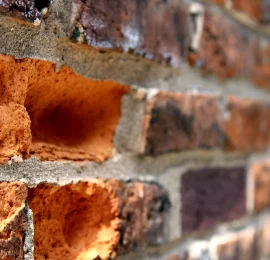Comprehensive Patio Installation Services by Trusted Professionals
Wiki Article
Opening the Keys of Lasting Stonework Construction Practices for Eco-Friendly Structures
Among the myriad methods to eco-friendly building, lasting stonework construction stands out as a tried and true and long lasting method that holds a riches of untapped possibility. From the choice of products to innovative construction techniques, the secrets to achieving sustainability within masonry building are diverse and appealing.Benefits of Lasting Masonry Construction
Accepting sustainable masonry building and construction techniques not just reduces environmental impact but additionally supplies long-lasting financial benefits to contractors and areas. By using products like recycled blocks, blocks, and stones, builders can considerably reduce the carbon footprint of their projects while advertising resource effectiveness. Additionally, sustainable stonework building and construction methods, such as correct insulation and thermal mass residential properties, can enhance power performance within buildings, leading to reduced functional prices in time.Furthermore, the resilience and strength of masonry frameworks add to long-term economic benefits. Buildings built utilizing sustainable masonry methods commonly need much less repair and maintenance, translating to set you back financial savings for contractors and residential property owners. The durability of masonry products also makes certain that structures continue to be stable and safe and secure, lowering the need for regular improvements or substitutes.
Eco-Friendly Stonework Materials
Using green masonry products is a pivotal action in the direction of boosting the sustainability of construction methods and lessening ecological influence while maximizing long-term economic benefits. Lasting stonework products are sourced, produced, and made use of in a manner that minimizes overall ecological effect. Sustainable concrete obstructs include recycled accumulations and may feature improved insulation residential properties, contributing to energy efficiency in buildings.Moreover, all-natural materials like adobe, rammed earth, and straw bundles supply outstanding thermal mass homes, decreasing the requirement for heating and cooling power. These materials are typically in your area offered, advertising regional economic situations and minimizing transportation-related carbon exhausts. By choosing environmentally friendly masonry products, building projects can dramatically decrease their ecological footprint and contribute to the production of much healthier, more lasting constructed settings.
Energy-Efficient Stonework Techniques
Power performance plays a vital function in enhancing the sustainability of masonry construction practices. By executing energy-efficient stonework methods, builders can substantially decrease the total power intake of a building, resulting in reduced operational prices and a smaller environmental impact. One vital energy-efficient stonework method is the use of thermal mass, which involves integrating dense products like concrete or block into the building's framework to soak up and store warmth. This aids manage interior temperature levels, reducing the need for mechanical heating and cooling down systems.
Developments in Lasting Stonework
Current improvements in sustainable masonry methods have brought about ingenious methods that are improving the building market. One such development is the advancement of self-healing concrete, which utilizes bacteria installed within the concrete to heal fractures autonomously. This innovation not only minimizes upkeep costs however additionally improves the toughness of stonework structures, adding to their sustainability.
An additional noteworthy advancement is the usage of recycled accumulations in stonework construction - masonry contractor. By integrating materials such as crushed ceramic waste or recycled glass right into concrete mixes, builders can decrease the ecological impact of building and construction tasks while preserving architectural honesty. This technique not just draws away waste from land fills but also preserves natural sources, making it a crucial innovation in lasting stonework building
Furthermore, the assimilation of digital design tools, such as Structure Information Modeling (BIM), is revolutionizing the means stonework frameworks are intended and built. BIM enables for more exact computations, minimized material waste, and enhanced energy efficiency, eventually causing more lasting building practices. These advancements collectively symbolize an encouraging future for lasting stonework construction in the era of eco-friendly buildings.
Future Trends in Masonry Sustainability
With the cutting-edge strides made in lasting masonry techniques, the future fads in masonry sustainability are poised to more revolutionize the building and construction industry. One of the vital fads forming the future of stonework sustainability is the boosted assimilation of innovation. Advancements such as Building Information Modeling (BIM) and online truth simulations are being made use of to enhance masonry building and construction procedures, leading to minimized material waste and enhanced energy efficiency in structures.Moreover, the growth of novel sustainable materials is set to play a substantial duty in boosting the eco-friendliness of masonry construction. masonry contractor. Technologies like self-healing concrete, recycled aggregates, and bio-based binders are getting traction for their capability to minimize environmental effect while keeping structural integrity

Final Thought
To conclude, lasting stonework construction practices offer many benefits for green structures. By making use of environmentally friendly products and energy-efficient strategies, masonry can add to a much more lasting constructed atmosphere. Developments in lasting masonry are continuously being established to further enhance the environmental efficiency of buildings. Looking towards the future, the pattern of masonry sustainability is expected to grow, leading to more ecologically friendly and energy-efficient building practices in the years to come.Report this wiki page